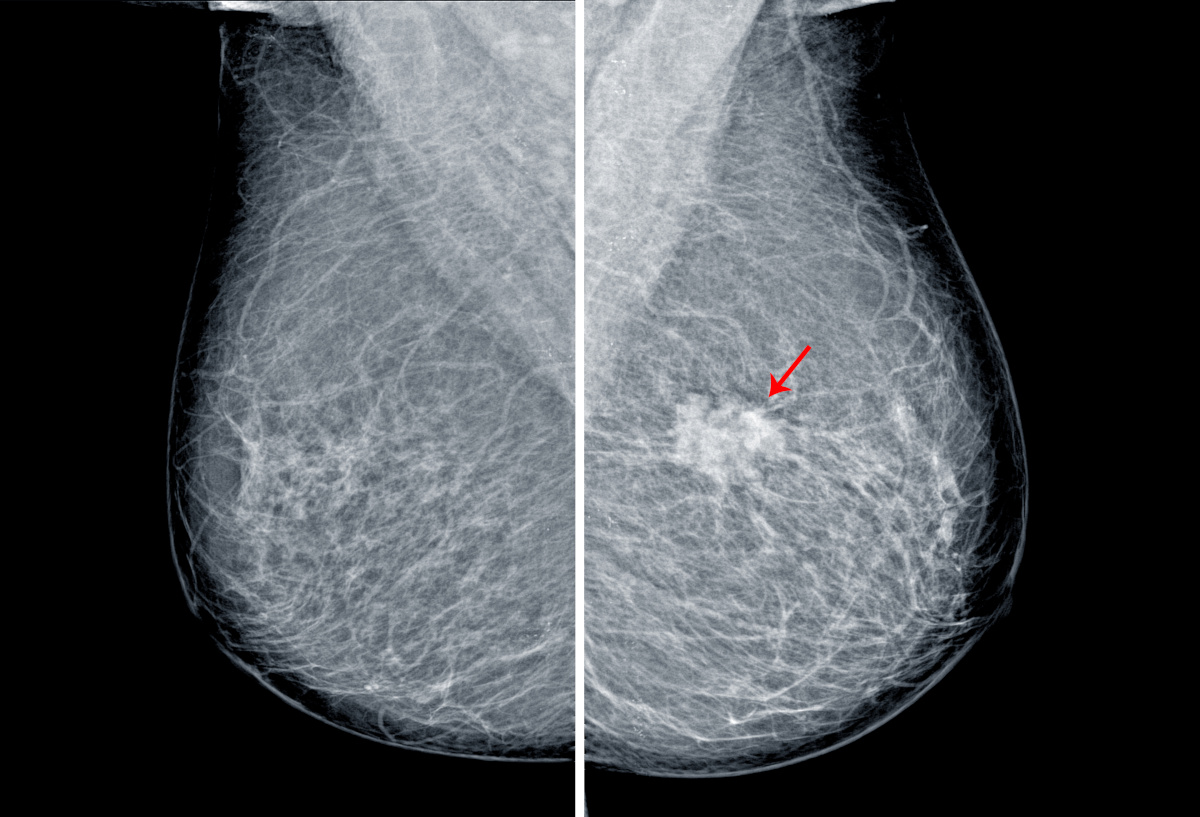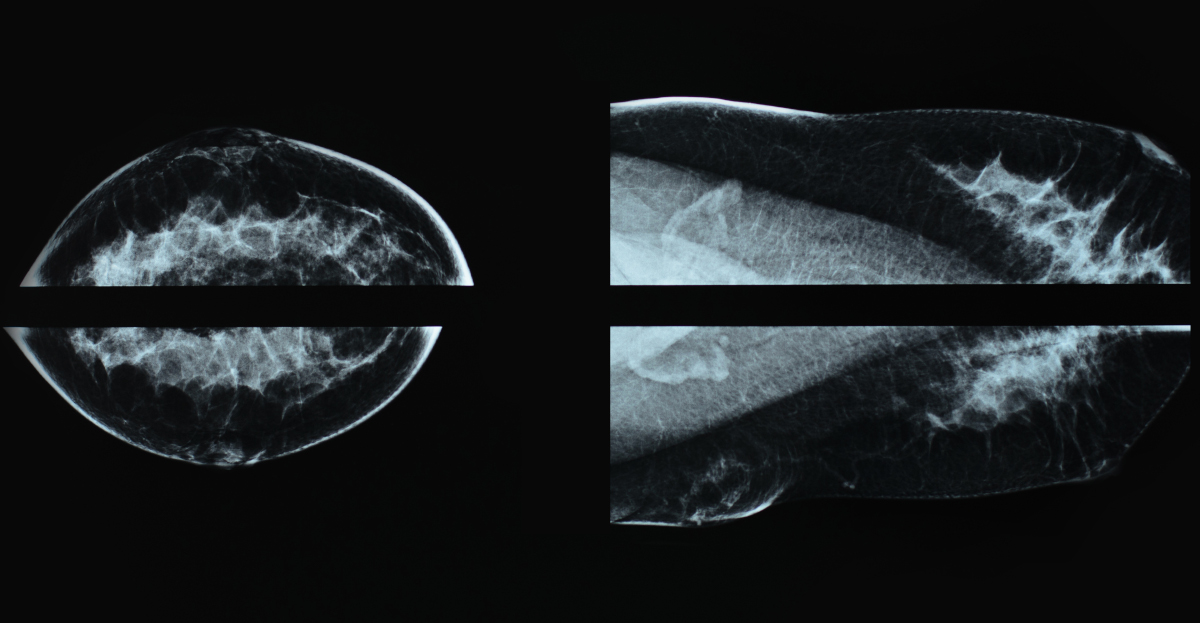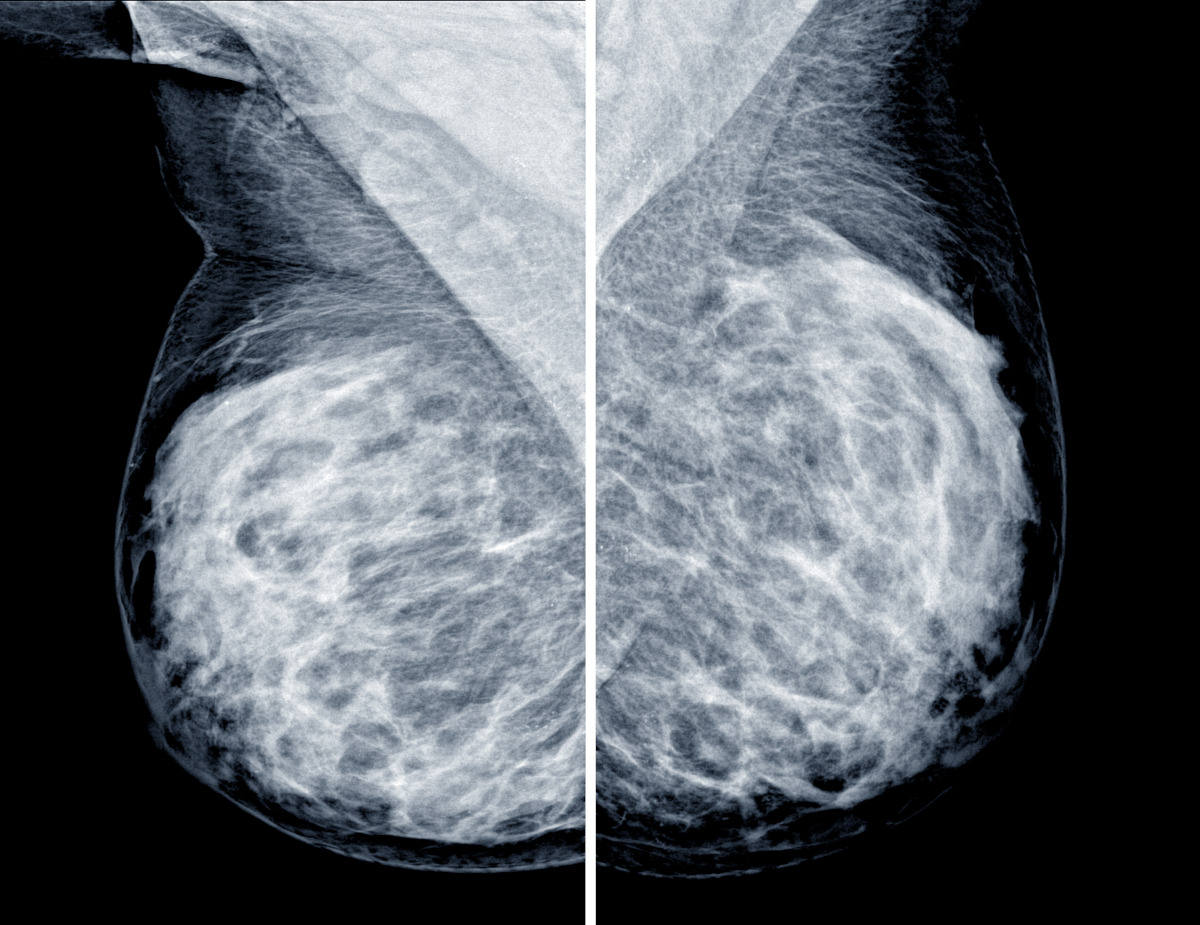In 2011, the US Preventive Services Task Force (USPSTF) recommended against routine mammography for women younger than 50-years-old. It was a shock to anyone with a license to practice medicine. The edict was in direct opposition to the standard of care, well established by multiple research studies spanning decades.

Mammogram – the image above shows the right and left breasts and an obvious asymmetry. The collection of white calcifications at the red arrow are suggestive of breast cancer and should be followed up with a biopsy for diagnosis.
Mistakes Were Made
The Major Medical Organizations in the US have been unrelenting, vocal and adamant in their opposition. The recommendation meant less money spent on mammograms; however, the “savings” were quickly overrun by the cost of delayed diagnosis. This is especially true for hispanic and black women who tend to develop more aggressive breast cancers at younger ages. The ultimate cost; however, was measured in lives not saved.
What Does the Science Say?
The data that the USPSTF used to make their recommendation was analyzed by Radiologists and Gynecologists alike, and they came to a very different conclusion. The data still showed that screening mammograms should start at age 40, or sooner for high risk patients.
Follow the Science
For the last dozen years, doctors have been lobbying the USPSTF to change its recommendation. The drive began the week after the recommendation was made, and I reported it to my San Francisco Plastic Surgery Blog readers in this post: You, Your Mammogram, Your Doctors, Your Life. Until this month, the USPSTF has made no apologies or corrections to their 2011 recommendation. Last year they finally admitted that the data does show a benefit to beginning screening mammograms at age 40, but continued to recommend 50 because, “the benefit was greater.” Even the American Cancer Society fell for this and started recommending mammograms at 45, halfway between what the science says and what the government recommended. This is an example of not following the science.
After 12 Years, The Truth Makes Some Headway

Mammography – can be performed on small breasts also — this includes men. The mammogram above shows the view for smaller breasts.
This month, after 12 years of bad advice, a crack in the blatant disregard for women’s lives is seen. On May 9th, 2023, the USPSTF released a draft of their “new” recommendation. In the draft, the Task Force recommends that all women get screened for breast cancer every other year starting at age 40 to reduce their risk of dying from this disease.
Now, the historical data has shown that yearly mammograms starting at age 40 is the gold standard. We all know that Mammograms save lives. National Cancer Institute data show the US breast cancer death rate, previously unchanged for 50 years, dropped 37 percent since mammograms became widespread in 1990 through 2011. The US Preventive Services Task Force (USPST); however, doesn’t seem to get it. Not until the uptick in breast cancer and delayed diagnosis seen with their recommendation did they change their tune. But rather than return to what was working, they still want to try something less.
Their statement also states, “We are also urgently calling for more research that will allow us to build on our existing recommendations and help all women live longer and healthier lives. Specifically, we need to know how best to address the health disparities across screening and treatment experienced by Black, Hispanic, Latina, Asian, Pacific Islander, Native American, and Alaska Native women.”
That’s a great statement, all the USPSTF has to do is look at the current literature and they will see yearly screening mammograms beginning at age 40 is still the gold standard. Moreover, this research was done when radiation levels for mammograms were higher. Newer mammograms use less radiation and thus fewer long term problems from ionizing radiation.
The Big Coverup Lie
The USPSTF also had the nerve to include this in their statement, “New and more inclusive science about breast cancer in people younger than 50 has enabled us to expand our prior recommendation and encourage all women to get screened in their 40s. We have long known that screening for breast cancer saves lives, and the science now supports all women getting screened, every other year, starting at age 40.”
Dear USPSTF, the data is decades older than your 2011 recommendation. Shame on you. Recent evidence shows more women in their 40s are getting breast cancer, with the number of newly diagnosed women increasing about 2 percent each year. Maybe this is the data they are referring to; however, this data that would not exist if they had not meddled.
Get Your Mammogram Now
Starting breast cancer screening at 40, rather than 50, will save thousands of lives per year. I recommend all patients considering breast surgery, especially elective breast surgery, have a screening mammogram if they are 40 years old. If your mother or sister had breast cancer at a young age, your first mammogram should be ten years before their age at diagnosis.

Mammogram – the pair of breast images above show dense breast tissue. Compared to the first mammogram above, the breast tissue is much whiter on the mammogram, making the screening for micro-calcifications more difficult.
Dense breasts are harder to screen, and an ancillary test like ultrasound or MRI may be recommended. Dense breasts are an independent risk factor for breast cancer.
Previous Post Next Post